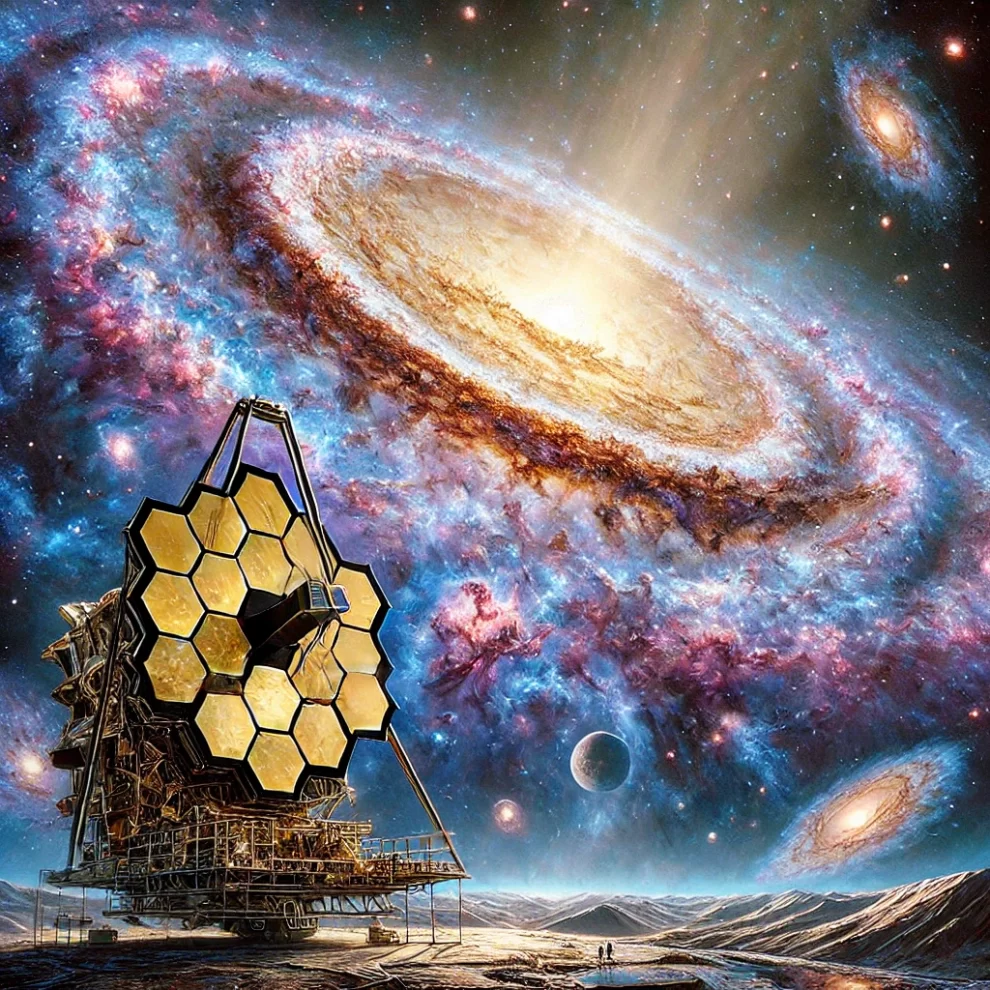
Advanced observations by the JWST indicate that early galaxies matured faster and were less chaotic, challenging previous theories of galaxy evolution.
New research has revealed that the Universe’s early galaxies were less turbulent and developed more rapidly than previously believed. This research, led by an international team from Durham University, utilized the James Webb Space Telescope (JWST) to find evidence of bar formation when the Universe was only a few billion years old.
These findings were published in the journal Monthly Notices of the Royal Astronomical Society.

Insights From the James Webb Space Telescope
Bars are elongated strips of stars found in disc or spiral galaxies like our Milky Way. As bars develop, they regulate star formation within a galaxy, pushing gas into the galaxy’s central region. Their presence tells scientists that galaxies have entered a settled, mature phase.
Earlier studies using the Hubble Space Telescope identified galaxies forming bars up to eight or nine billion years ago. However, the JWST’s enhanced sensitivity and broader wavelength range have allowed astronomers to detect these phenomena even further back in time.

“Galaxies in the early Universe are maturing much faster than we thought. This is a real surprise because you would expect the Universe at that stage to be very turbulent with lots of collisions between galaxies and a lot of gas that hasn’t yet transformed into stars,” explained author Zoe Le Conte, a PhD researcher in the Centre for Extragalactic Astronomy, Department of Physics, Durham University.
“However, thanks to the James Webb Space Telescope we are seeing a lot of these bars much earlier in the life of the Universe which means that galaxies were at a more settled stage in their evolution than previously thought,” she adds. The researchers say this new evidence suggests that theories on early galaxy evolution may need significant revisions.

Research Methodology and Findings
The researchers used the JWST to look for bar formation in galaxies as they would have been seen between 8 to 11.5 billion years ago. The Universe itself is 13.7 billion years old. Of 368 disc galaxies observed, the researchers saw that almost 20 percent had bars – twice as many than observed by Hubble.
Co-author Dr. Dimitri Gadotti, in the Centre for Extragalactic Astronomy, Department of Physics, Durham University, said: “We find that many more bars were present in the early Universe than previously found in Hubble studies, implying that bar-driven galaxy evolution has been happening for much longer than previously thought.”

“The simulations of the Universe now need to be scrutinized to see if we get the same results as the observations we’ve made with James Webb,” adds Gadotti. “We have to think outside of what we thought we knew.”
As the researchers looked further back in time, they were able to see fewer and fewer bar-forming galaxies. They say this might be because galaxies at an even earlier stage of the Universe might not be as well formed. There is also currently no way to see shorter bars of stars, which are less easy to spot, even with the increased telescopic power offered by the JWST.

Future Directions
The researchers say they now want to investigate even more galaxies in the early Universe to see if they have also formed bars. They hope to eventually look further back in time – 12.2 billion years – to look at bar-growth over time and what the mechanisms are behind this growth.
Reference: “A JWST investigation into the bar fraction at redshifts 1 ≤ z ≤ 3” by Zoe A Le Conte, Dimitri A Gadotti, Leonardo Ferreira, Christopher J Conselice, Camila de Sá-Freitas, Taehyun Kim, Justus Neumann, Francesca Fragkoudi, E Athanassoula and Nathan J Adams, 23 April 2024, Monthly Notices of the Royal Astronomical Society.
DOI: 10.1093/mnras/stae921
Durham University’s Centre for Extragalactic Astronomy and Centre for Advanced Instrumentation provided significant contributions to the development of the JWST. The latest study also included scientists from Durham University’s Institute for Computational Cosmology, University of Victoria, Canada; Jodrell Bank Centre for Astrophysics – University of Manchester, UK; the European Southern Observatory; the Department of Astronomy and Atmospheric Sciences, Kyungpook National University, Republic of Korea; the Max Planck Institute for Astronomy, Germany; Aix Marseille University, France. The research was funded in the UK by the UKRI-Science and Technology Facilities Council.















Add Comment